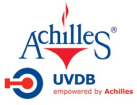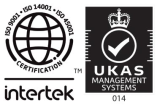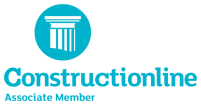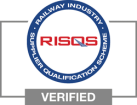Instructions for the safe use of: Eyebolts
View further information on the eyebolts we offer in our online catalogue
Please note that these instructions are not exhaustive; and they may not be appropriate for all pieces of equipment or applications. Always refer to the manufacturers instructions for your specific equipment. if you are still unsure always consult an appropriately qualified individual.
When Using Eyebolts Always:
- Store and handle eyebolts correctly.
- Inspect eyebolts before use and before placing into storage.
- Select the correct pattern eyebolt for the application.
- Ensure that the eyebolt and tapped hole threads are compatible and strong enough for the load.
- Correctly align the plane of the eye using shims where necessary.
- Ensure that the collar is fully seated when hand tight.
When Using Eyebolts Never:
- Use tommy bars, grips or wrenches to tighten eyebolts.
- Use dynamo eyebolts for angular loading.
- Use a single eyebolt to lift a load that is free to rotate.
- Reeve slings through the eyes, links or shackles fitted to pairs of eyebolts.
- Force hooks or other fittings into the eye; they must fit freely.
- Shock load eyebolts.
- Type of eyebolt - eyebolt with link for all general purpose applications, collar eyebolt for most general duties, dynamo eyebolt only where a truly axial load is guaranteed. (A collar eyebolt fitted with a link through the eye must always be considered as a collar eyebolt and not as an eyebolt with link.)
- Capacity - (rating eyebolts for angular loading) It is necessary to reduce the SWL by the following factors when using eyebolts with two leg slings:
- Never return damaged eyebolts to storage. They should be dry, clean and protected from corrosion. Care must be taken to protect threads from damage whilst in store.
- Where possible use removable plugs to exclude debris from tapped holes.
- Do not attempt lifting operations unless you understand the use and limitations to use of the equipment, the slinging procedures and the mode factors to be applied.
- Do not use defective eyebolts. Check the thread of both the eyebolt and hole, ensure they are compatible, fully formed, of sufficient length, undamaged and clear of any debris which may prevent proper engagement.
- Ensure the contact surface around the hole is flat, clean and perpendicular to the thread axis. Tighten the eyebolt down firmly by hand. The eye must be in the correct plane and the collar must sit evenly on the contact surface. Use shims but do not machine the collar or over tighten to achieve this.
- A hook may be engaged directly into the eye of a dynamo eyebolt or the link of an eyebolt with link. Collar eyebolts must be fitted with a shackle or link to accept hooks. The hooks must fit freely so do not wedge or force them into position.
- Never reeve a sling through the eyes, links or shackles fitted to eyebolts used in pairs as this will impose a severe resultant load to the eyebolts.
- Dynamo eyebolts must only be used for axial loading. When using eyebolts with multi-leg slings use eyebolts with links or collar eyebolts taking care to de-rate them correctly for angular loading conditions.
- Where a single eyebolt is used, use a swivel or swivel hook to prevent the eyebolt unscrewing.
Selecting the Correct Eyebolt
Eyebolts to BS 4278 are available in three standard types, eyebolt with link, collar eyebolt and dynamo eyebolt. Select the eyebolt to be used and plan the lift taking the following into account:
| Included angle a of sling legs | |||
| Type of eyebolt | 0<30 | 30<60 | 60<90 |
| Eyebolt with link | 1.0 | 0.8 | 0.63 |
| Collar eyebolt | 0.63 | 0.4 | 0.25 |
Storing and Handling Eyebolts
Using Eyebolts Safely
In-service Inspection and Maintenance
Maintenance requirements are minimal. Keep eyebolts clean, protect from corrosion and protect threads from damage. Do not attempt to straighten bent eyebolts or re-cut threads. Regularly inspect eyebolts and, in the event of the following defects, refer the eyebolt to a Competent Person for thorough examination: illegible markings; distortion; worn, or bent shanks and threads; incomplete or incorrectly formed threads; damaged eyes; nicks, gouges, cracks, corrosion or other defects.







